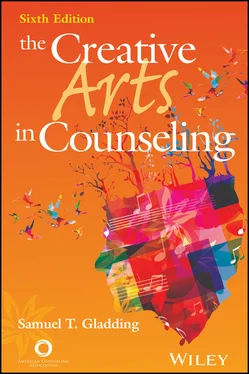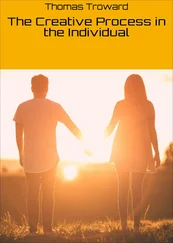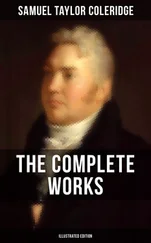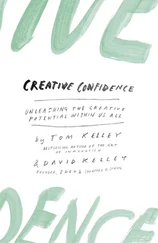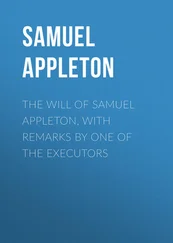Samuel T. Gladding - The Creative Arts in Counseling
Здесь есть возможность читать онлайн «Samuel T. Gladding - The Creative Arts in Counseling» — ознакомительный отрывок электронной книги совершенно бесплатно, а после прочтения отрывка купить полную версию. В некоторых случаях можно слушать аудио, скачать через торрент в формате fb2 и присутствует краткое содержание. Жанр: unrecognised, на английском языке. Описание произведения, (предисловие) а так же отзывы посетителей доступны на портале библиотеки ЛибКат.
- Название:The Creative Arts in Counseling
- Автор:
- Жанр:
- Год:неизвестен
- ISBN:нет данных
- Рейтинг книги:3 / 5. Голосов: 1
-
Избранное:Добавить в избранное
- Отзывы:
-
Ваша оценка:
- 60
- 1
- 2
- 3
- 4
- 5
The Creative Arts in Counseling: краткое содержание, описание и аннотация
Предлагаем к чтению аннотацию, описание, краткое содержание или предисловие (зависит от того, что написал сам автор книги «The Creative Arts in Counseling»). Если вы не нашли необходимую информацию о книге — напишите в комментариях, мы постараемся отыскать её.
*To purchase print copies, please visit the ACA website here
*Reproduction requests for material from books published by ACA should be directed to permissions@counseling.org
The Creative Arts in Counseling — читать онлайн ознакомительный отрывок
Ниже представлен текст книги, разбитый по страницам. Система сохранения места последней прочитанной страницы, позволяет с удобством читать онлайн бесплатно книгу «The Creative Arts in Counseling», без необходимости каждый раз заново искать на чём Вы остановились. Поставьте закладку, и сможете в любой момент перейти на страницу, на которой закончили чтение.
Интервал:
Закладка:
Another way music and play may be combined is through improvised musical play, an intervention technique that uses improvised music and lyrics to encourage social play among developmentally delayed and nondelayed children in mainstream settings (Gunsberg, 1988). In such situations, teachers make up simple songs using familiar tunes to describe what is occurring with the children, such as “Everyone is clapping their hands and being active.” This encourages continuous interaction of the children and sustains “social play episodes lasting more than three times the expected duration” (Gunsberg, 1988, p. 178).
Music and Autobiography and Storytelling
Another way of using music with other creative arts is to do what is normally a literary task in sound or with sound in the background (Watkins, 1990). A music autobiography is one interesting literary task that can be done with sound. In this creative endeavor, participants represent their lives through sound. For instance, someone who has spent a lifetime living by the ocean may splash a hand in water with a certain rhythm, and someone who has lived in an arid region may clap rocks together in a unique way. Completing a music autobiography may also involve connecting bits of music with lyrics together. The effect is particularly powerful if there are verses and a refrain, similar to what the rock singer Billy Joel did with his song “We Didn’t Start the Fire.”
In storytelling, music may be used to enhance the background of the presentation. For instance, Painter (1989) recommended using classical music such as the first movement of Handel’s Concerto for Harp and Orchestra in B-Flat Major , the first movement of Bach’s Suite for Harp , Mozart’s Adagio and Rondo in C Minor , or the second movement of Wagenseil’s Concerto for Harp and Orchestra as background music for stories being told to young children. Such pieces set a mood and stir up emotions that would not occur without such an accompaniment. Besides classical music, other forms of music, such as marches, ballet music, solo instrumental, western music, folk melodies, polkas, and novelty music, may also work to create an atmosphere for a story or the character in a story.
Music and Film
Music, as indicated, has a long history punctuating potent moments in films. John Williams has been especially prolific composing music scores for such films as Star Wars , Jaws , E.T. The Extra-Terrestrial , Raiders of the Lost Ark , Jurassic Park , The Color Purple , and Schindler’s List , among others. A more recent development has been the origination of music videos. This medium, which became popular in the 1980s, at first simply depicted artistic impressions of song lyrics that featured recording artists. However, music videos have expanded and can be used for much more than simple entertainment. For instance, music videos can be used in empathy training, especially for counselorsin-training (Ohrt et al., 2009). Such music videos as “When You’re Gone” (Klasfeld, 2007) can be played to highlight loss and loneliness, or “Concrete Angel” (Flanigen, 2002) can be used to focus on feelings and features related to abuse. Thus, music videos “may serve as a medium for arousing emotional responses to a character that may represent future clients” (Ohrt et al., 2009, p. 329).
Summary
Music has a long history as a healing art (Horden, 2017). Throughout human history, music has soothed or inspired individuals. It has been a major impetus in the prevention and treatment of major disorders and minor problems. It has allowed persons to communicate in a universal, nonverbal way that has promoted identity, bonding, creation, and discovery. As William L. Schurk, sound-recording archivist at Bowling Green State University, observed, music is “not a lonely art form” (Rosenblatt, 1991, p. B7). Rather, it involves vocal, physical, social, and emotional responses. “Applications include improvising, recreating, composing, listening, [and] game or play activities” (Bonny, 1997, p. 70).
In this chapter, the multiple ways music is used in counseling have been examined. Some professionals are music therapists, and other counselors use music in their therapeutic practice. Both types of individuals are helpful, but the backgrounds and emphases of these two groups differ. In music therapy, practitioners place greater emphasis on certain procedures with specific difficulties and populations. Individuals who obtain the designation of music therapist are more skilled in music than counselors who occasionally use music therapeutically. Regardless of the counselor’s designation, four ways that music may be used in counseling are through listening, performing, improvising, and composing. The choice of music in counseling depends on the needs of clients. Because music is so universal, it can be used appropriately with children, adolescents, adults, older persons, groups, families, people who are ill, and educators/supervisors. The various ways in which this medium can be used are limited only by the creativity and skills of practitioners. Music is often combined with poetry and with movement and dance to enhance its overall impact. In summary, music is a universal and versatile art that is of major importance to counselors who wish to promote catharsis, creativity, and communication abilities in a variety of clients and situations.
Exercises
1 On a daily basis, for at least a week, at specific times of the day, notice how you are feeling. With materials that are immediately available, such as pencils, pans, or books, make music by tapping, banging, or even humming in a way that best represents your mood. Record your sessions whenever possible and process these experiences with a colleague regularly. How could you use what you learn in this exercise with clients?
2 At the beginning of a group, ask participants to bring in music on their cell phones that expresses some of their feelings. Emphasize to the whole group that there is no right or wrong music for this task. As group members introduce themselves, have them use the music they brought in any way they choose. After the introductions, discuss the variety of sounds and words within the group and how diversity, as well as sameness, can contribute to growth.
3 When working with people who relate primarily in a nonverbal manner, ask them to bring in music they like to listen to (from as many different sources as possible). Have them respond as they wish to the music, such as by drawing or dancing. Limit this exercise to about 15 minutes, and then process with them what happened as they listened or moved. What did they feel, think, and learn? What did they notice about their life with regard to the music?
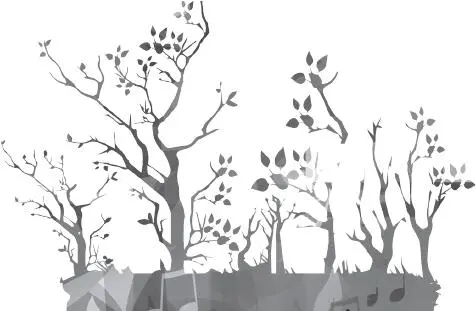
Chapter 3 Dance and Movement in Counseling
Dance Street
Dance Street began before I was born and I don’t know where it will lead.Could be it will trail on forever perhaps it will end with me.The street began in downtown Richmond made of bricks, entitled “Dance,” for a man who bore the burden of fighting for a beaten people.When war ended he built again cared for the “cause” but more its people,Moving with courage in the midst of strife he left an ancestral legacy for the dance of life.
—Gladding, 1991a/2003
Chapter Overview
From reading this chapter you will learn about
The similarities and differences in dance and movement therapy (DMT)
Читать дальшеИнтервал:
Закладка:
Похожие книги на «The Creative Arts in Counseling»
Представляем Вашему вниманию похожие книги на «The Creative Arts in Counseling» списком для выбора. Мы отобрали схожую по названию и смыслу литературу в надежде предоставить читателям больше вариантов отыскать новые, интересные, ещё непрочитанные произведения.
Обсуждение, отзывы о книге «The Creative Arts in Counseling» и просто собственные мнения читателей. Оставьте ваши комментарии, напишите, что Вы думаете о произведении, его смысле или главных героях. Укажите что конкретно понравилось, а что нет, и почему Вы так считаете.
